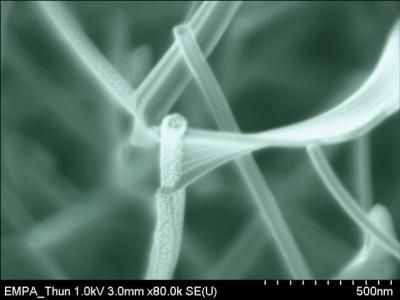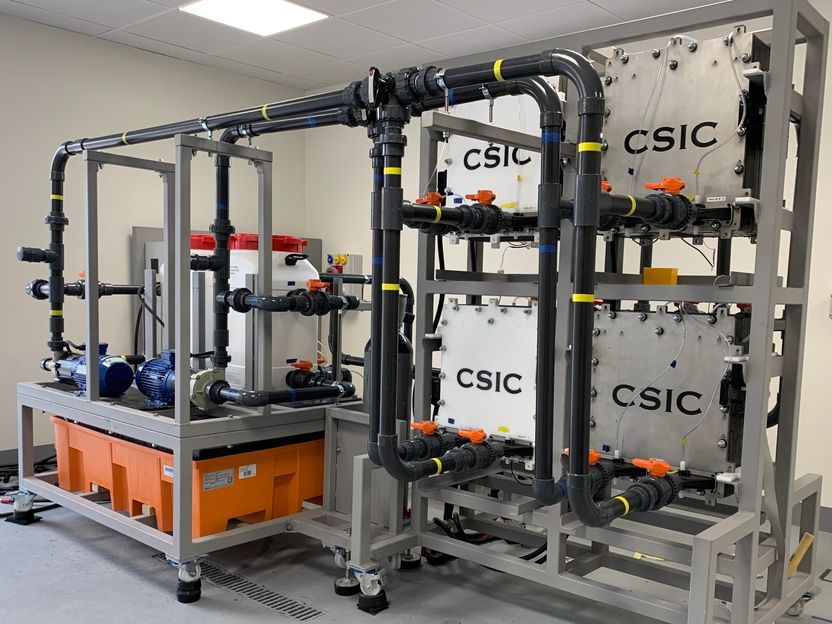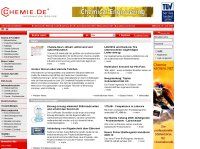Chemists create two-armed nanorobotic device to maneuver world's tiniest particles
Chemists at New York University and China's Nanjing University have developed a two-armed nanorobotic device that can manipulate molecules within a device built from DNA. The device is described in Nature nanotechnology .
"The aim of nanotechnology is to put specific atomic and molecular species where we want them and when we want them there," said NYU Chemistry Professor Nadrian Seeman, one of the co-authors. "This is a programmable unit that allows researchers to capture and maneuver patterns on a scale that is unprecedented."
The device is approximately 150 x 50 x 8 nanometers. The creation enhances Seeman's earlier work — a single nanorobotic arm, completed in 2006, marking the first time scientists had been able to employ a functional nanotechnology device within a DNA array. The new, two-armed device employs DNA origami, a method unveiled in 2006 that uses a few hundred short DNA strands to direct a very long DNA strand to form structures that adopt any desired shape. These shapes, approximately 100 nanometers in diameter, are eight times larger and three times more complex than what could be created within a simple crystalline DNA array.
As with Seeman's previous creation, the two-armed nanorobotic device enables the creation of new DNA structures, thereby potentially serving as a factory for assembling the building blocks of new materials. With this capability, it has the potential to develop new synthetic fibers, advance the encryption of information, and improve DNA-scaffolded computer assembly.
In the two-armed nanorobotic device, the arms face each other, ready to capture molecules that make up a DNA sequence. Using set strands that bind to its molecules, the arms are then able to change the structure of the device. This changes the sticky ends available to capture a new pattern component.
The researchers note that the device performs with 100 percent accuracy. Earlier trials revealed that it captured targeted molecules only 60 to 80 percent of the time. But by heating the device in the presence of the correct species, they found that the arms captured the targeted molecules 100 percent of the time.
They confirmed their results by atomic force microscopy (AFM), which permits features that are a few billionths of a meter to be visualized.
Most read news
Organizations
Other news from the department science

Get the chemical industry in your inbox
By submitting this form you agree that LUMITOS AG will send you the newsletter(s) selected above by email. Your data will not be passed on to third parties. Your data will be stored and processed in accordance with our data protection regulations. LUMITOS may contact you by email for the purpose of advertising or market and opinion surveys. You can revoke your consent at any time without giving reasons to LUMITOS AG, Ernst-Augustin-Str. 2, 12489 Berlin, Germany or by e-mail at revoke@lumitos.com with effect for the future. In addition, each email contains a link to unsubscribe from the corresponding newsletter.
Most read news
More news from our other portals
Last viewed contents
Rosicrucianism
I-recycle
B7_(protein)
Category:EC_2.7.8
Perfect image without metamaterials ... and a reprieve for silicon chips

Nanowires for the electronics and optoelectronics of the future - Process for manufacturing nanoelectronic 'mini-circuits' developed
Abgenix And Celltech Enter Technology Licensing And Co-Development Agreement
Oxide and semiconductor combination builds new device potential
Electrochemical sensor for the uncomplicated detection of "hits" on DNA chips
New research could transform how we filter water


























































